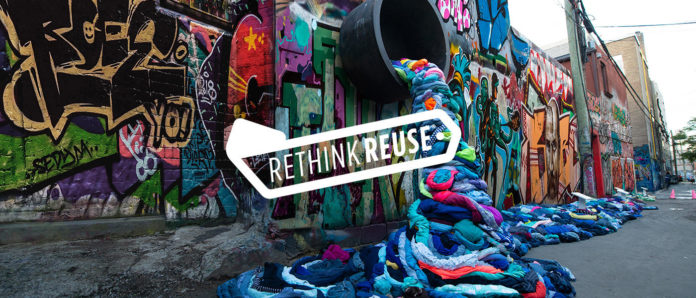Because most of us don’t have to account for the waste we are responsible for producing, there’s no easy way for us to understand the responsibilities we take on as consumers. This is especially true in the age of fast fashion, where most of our wardrobes are cheap and constantly replenished. It’s nearly impossible to imagine a world in which clothing had once been worn for decades at a time. In contrast, according to figures cited by The Guardian, the average closet lifespan of an article of clothing nowadays is anywhere between five weeks and several years.
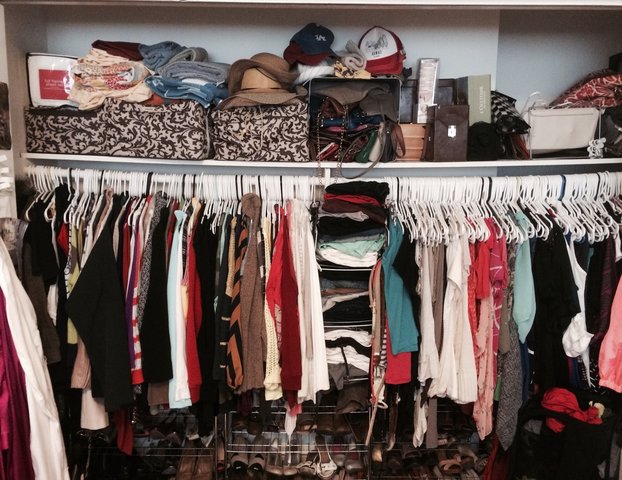
This truncated lifespan of clothing is a result of poor quality, ephemeral design trends, and overall patterns of commerce that are designed to make the biggest profits for people at the top — often at the expense of the consumer, the laborer, and the environment. Fashion has since become one of the most polluting industries in the world. Fortune Magazine earlier this year cited statistics that put the fashion industry’s carbon emissions on par with pollution from the aviation industry. But there’s a less obvious problem on our hands, too. Because fast fashion has us consuming products at a voracious pace, we’ve now got a big textile waste problem that isn’t going away any time soon.
I haven’t read Marie Kondo’s book, but I have seen a few episodes of her Netflix series “Tidying Up.” I think this is a good place for us to start wrapping our heads around our nation’s textile waste problem. The first thing Kondo asks her clients to do is to remove all articles of clothing from their closets and dressers and pile them up into a big, messy mountain. This, it seems, is a grand reckoning, a shock to the system that forces people to see exactly what their consumption habits have amounted to. Most people are horrified.
I’m not a big shopper, so my clothing amounted to a modest hilltop. “I’m not so bad,” I thought, and went about sorting through what I would keep, what I would discard, what I would turn into cleaning rags. By the end of the process, I had managed to fill two garbage bags’ worth of unwanted clothing, which I proudly diverted to the textile recycling drop-off center at my local farmers’ market (right next to the food waste collection station!) thinking I was doing a good deed. I had heard somewhere that textiles shouldn’t go to the dump.
Keep Textiles Out of Landfills
When we put our unwanted items in a garbage bag and leave it at the curb, it is picked up and transported to a landfill somewhere, never to be seen by consumers again. But those unwanted items are only a part of the way through their lifecycle, presenting a major challenge: There is simply too much product to discard. According to the CBC, about 85 percent of textiles in North America make their final stop at the landfill — 12 million tons of textile waste each year.
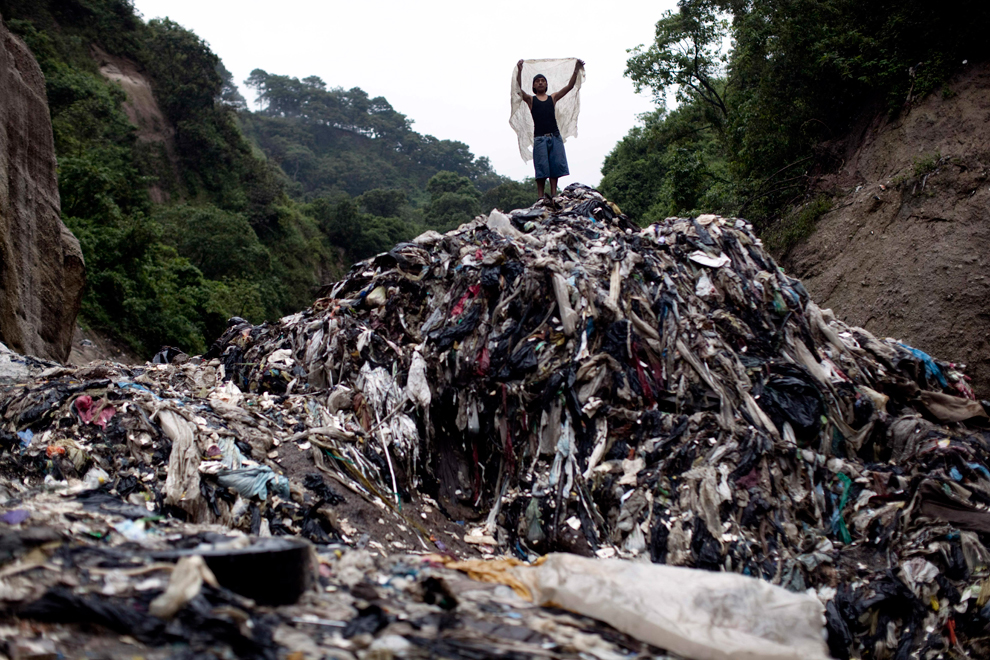
Space is, of course, not unlimited, and this presents a logistical and environmental nightmare. Global Citizen cited figures that warn that the U.S. could run out of safe landfill space within the next two decades. Landfills can be so big, nowadays, that they become their own, dangerous ecosystems. The 2006 short documentary Recycled Life, narrated by Edward James Olmos, revealed how landfills in Guatemala have come to sustain the needs of its local, neglected community. One man’s garbage literally becomes another man’s treasure, as entire families — known as guajeros — pick through the waste to find items that still have life in them, reselling them for profit. It’s a way of life that has supported multiple generations of guajeros, who have little choice but to risk injury or death in landslides or collapses at the landfill. So many guajeros end up missing that some have suggested that noxious gases are at fault, dissolving humans bodies into nothing.
It’s not so far fetched. It should go without saying that synthetic, petroleum-based materials like nylon and polyester break down at landfills into nasty petroleum-based chemicals. You know, the fabric that you wear to yoga class where you hope to grow more mindful of the world, or the lightweight “fleece” that keeps you warm on a hike through pristine woodlands — as materials, these textiles aren’t ultimately bringing us closer to the earth. They may be extremely useful to us, designed for comfort, utility, and performance, but they are not designed to become good, earth-friendly waste. What’s more, while high-quality versions of these items may be built to withstand usage and time, there still seems to be a never-ending marketing campaign for us to buy the latest colorway.
What About Plant-Based Textiles?
It would seem that the next (eco)logical step would be to buy plant-based versions of the clothing we’re accustomed to purchasing. These pieces are bound to be better, right? Sorry, but I’m here to wreck your fantasy about your old tank tops returning to the earth from whence they came.
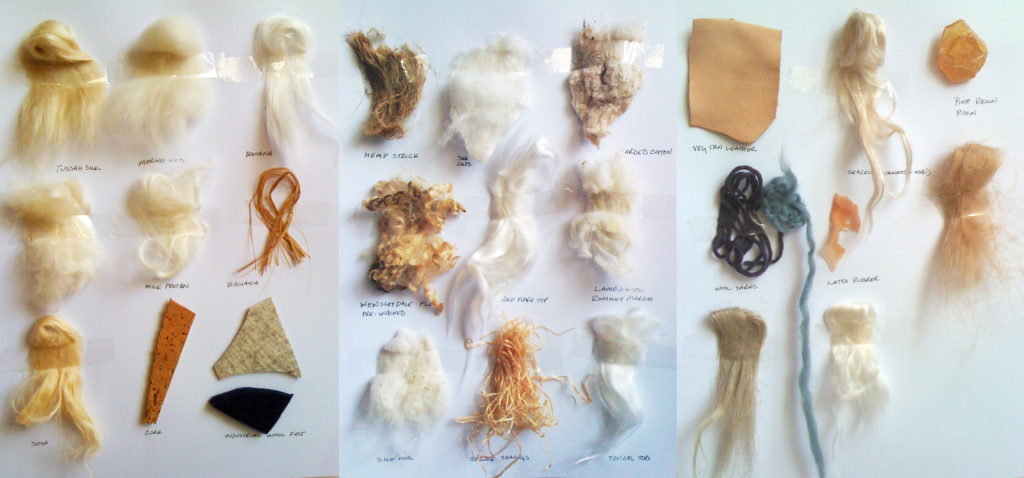
Natural textiles get mixed in with other products that shouldn’t be at a landfill — recyclable plastics and glass, aluminum, paper, food waste — and adds to the toxic miasma that gets created when all of these items break down on top of one another; just as creation needs space and optimal conditions to flourish, destruction also needs these things. For example, when food waste is composted, it becomes nutrient-rich material that replenishes the soil. But when mixed in with other waste in landfills, food waste cannot breakdown into humus, and instead produces toxic methane gasses. Clothing made of natural materials produces methane when relegated to landfills, too. After all, textiles like cotton and linen are in essence plant-based materials, so it makes sense that they need to be disposed of properly.
But there’s no real way to “compost” even natural textiles because the reality is that they are typically put through unnatural processes in order to become soft, wearable, fashionable fabrics. “They’ve been bleached, dyed, printed on, scoured in chemical baths,” the CEO of a sustainability index pointed out to Newsweek, and these components are not compost-friendly. A researcher who has studied both microplastic and natural fibers pointed out to the New York Times that these fibers “are often infused with harmful chemicals, including dyes that can cause skin rashes in humans, surfactants often used in detergents that are known to compromise the immune system, and antimicrobials like triclosan, which can kill wildlife,” and that these chemicals and fibers are found in abundance in areas near textile factories — meaning, the people who live and work in the textile industry are exposed to the health consequences of our consumption.
The Problem With Textile Recycling
With 85 percent of textiles going to the landfill, only about 15 percent ends up at textile recycling centers. From here, about half is diverted to for second-hand use, while the other half is turned into rags and fiber for industrial use. With my modest wardrobe purge, I patted myself on the back for contributing to this insufficient but laudable 15 percent. Since there’s no way to compost our modern textiles, keeping them out of our landfills is one way to reduce the impact that our fashion habits have on the planet and its inhabitants. Isn’t the answer to just make sure that the other 85 percent makes it to recyclers?
I’ve since learned that we’re not really doing any favors by donating our unwanted clothes to less fortunate communities through non-profit organizations or textile recycling centers. “A lot of people have a misconception that their donations are ending up on the back of someone in need in your community,” Jessica Schrieber, the founder of FabScrap, told Science Line. Schrieber explained that most of the items that we donate actually get exported to other countries, and at this point there’s so much donated material being exported that some nations are even banning these shipments. Several East African nations have been pushing to ban imports of used textiles, a move that will help to reduce the amount of waste that is accumulating on their grounds.
But don’t expect these bans to initiate a grassroots, slow fashion clothing revolution. These countries, like the U.S., are also reliant on fast fashion imports from places like China or Bangladesh that offer cheap, easily accessible, low-quality products that ultimately make their way to the dump. Oftentimes, the surplus of textiles — whether imported as new clothing or as secondhand material — is simply burned in toxic bonfires. In countries with the infrastructure for it, this practice of burning garbage limits the waste that ends up in landfills and harnesses the energy as fuel, while reducing methane emissions from landfills. Don’t be mistaken though: This innovative, albeit problematic, solution to waste isn’t what’s happening in countries that are being treated as dumping grounds for nations — ahem, us — who have an overconsumption issue.
The Solutions
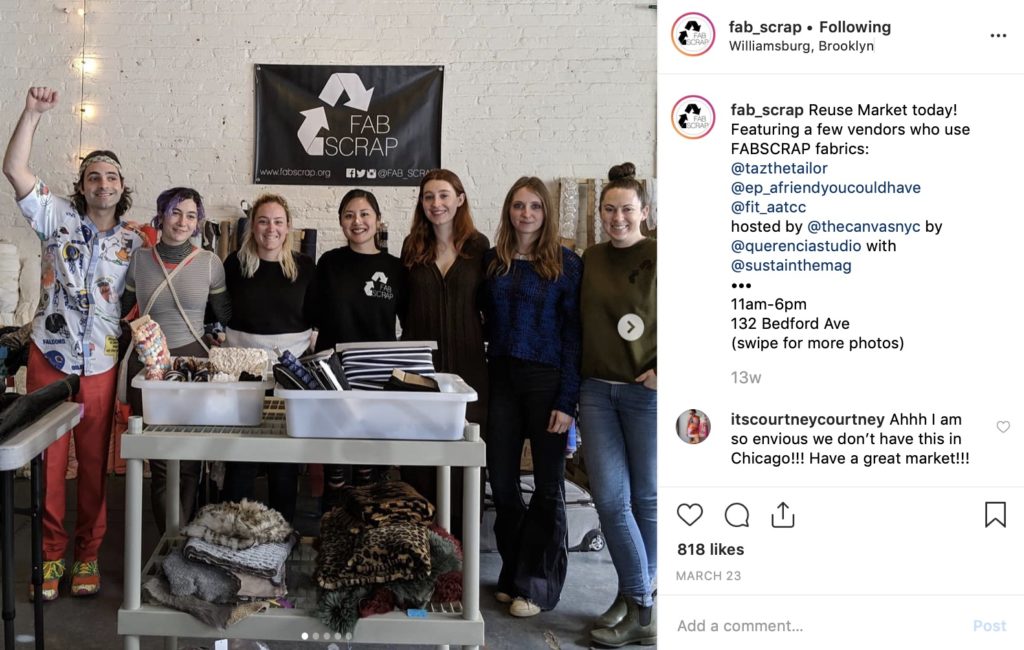
Schrieber’s FabScrap is a women-run non-profit based in New York City that accepts textile donations from the fashion industry and makes these fabrics accessible to other members of the industry who are looking to work with recycled materials; companies like hers are attempting to reduce the burden that the consumer has in buying clothing by making businesses more accountable for what they consume and discard. Major retailers like Reformation are using these kinds of upcycled materials to create new designs — but ultimately are still producing goods that are flooding the markets that are not necessarily made to last. I personally have purchased many items made from upcycled or recycled materials — leggings made from water bottles, swimsuits made from recycled nylon, jumpsuits made of deadstock — and frankly, these articles of clothing tend to last just about as long as non-recycled pieces because they are usually produced by companies that are simply greenwashing their fast fashion problem. Even more technically, recycled fibers sound great but are usually of compromised quality.
To get the good upcycled stuff, you usually have to look to small designers who work on a small scale; the tradeoff here, of course, is that you’re going to be paying a lot more than you’re probably used to paying for your wardrobe. It’s not a viable solution for most Americans.
That’s where shopping vintage or secondhand shines. Shopping at local thrift stores or through online portals is a way for consumers to reduce their individual textile footprint, and unless you’re buying vintage Chanel, you’re probably paying less than you would for new, well-sourced, well-made items. More importantly, by not purchasing newly produced items, you’re responsible for a much smaller carbon footprint — maybe just the energy it took for an article of clothing to find its way into your hands, and perhaps the emissions of a storefront itself. Searching for older items of clothing is one way to give your wardrobe more staying power since secondhand items produced in the era of fast fashion can fall apart just as quickly as if we’d bought something new. Buying pieces that were made prior to the fast fashion boom means that we’re likely buying something that was made to last. (Ironically, one of my favorite secondhand finds is an H&M dress that I’ve been wearing for nearly six years now… so you never know.) A secondhand jean jacket from Gap circa 1999 is likely going to be made better than one that was made in 2016. That’s why some people opt to shop at vintage clothing shops when on the hunt for good quality denim because they really don’t make jeans like they used to.
Without even changing where or how often you shop, you can still turn your waste problem into wisdom. One thing I learned in doing a wardrobe purge is that I need to stop buying articles of clothing that require more maintenance than I’m willing to invest. Like, I hate hand-washing things, so I usually throw them into the washing machine with my non-delicates. Unfortunately, this shortens the lifespan of these items significantly. I also learned that I shouldn’t buy white or light-colored articles of clothing anymore because I am notoriously prone to spilling things on myself, and I eventually stain the heck out of the pits to the point that the items are not fit for donation. Making these small but conscious changes can have a significant effect on how much textile waste I produce in my next wardrobe purge.

But before we hit the shops, whether secondhand or firsthand, we ought to give our existing wardrobe the respect it deserves. We need to relearn to treat our clothes as if they were fixtures in our lives that deserve maintenance. Most of us don’t have basic mending skills, but doing a quick YouTube search can show us a million ways to patch up a fraying hem. Or, it’s super easy to drop off damaged articles of clothing at a tailor; there are also professionals out there who can even help reshape your beloved articles of clothing to your body if you’ve lost or gained weight. Got holes in the soles of your favorite pair of boots? Get a cobbler to resole them for you rather than chucking them in the garbage. Getting something repaired may end up being more expensive up-front than it would be for you to buy a new blouse from H&M, but it may be the case that the long-term math is in your favor if you can afford to make the initial investment and learn to treat your clothing with some TLC.
This is the mystical KonMari part where we “thank” our clothes for serving us. After all, we used to think of clothing as one of the essentials to survival — food, shelter, and clothing — not as an accessory to our whims. It seems awkward to thank an inanimate object, but this elemental shift in thinking will help to spark a sea change in how we consume fashion, ultimately allowing us to move away from our wasteful habits and put energy into the things that we really value in not just our wardrobe but in all of what we consume: quality, harmony, beauty, and respect.
For Image credit or remove please email for immediate removal - info@belatina.com


























